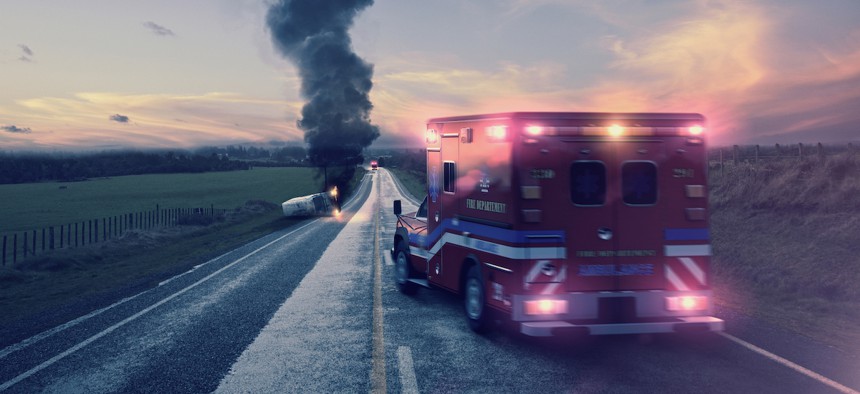Optimization model delivers faster emergency response

Colin Anderson Productions pty ltd/Getty Images
Researchers used historical traffic data to develop a model that calculates the most efficient routes for police and medical personnel traveling from dispatch locations to vehicle accident sites.
Researchers have developed a responder optimization model that calculates the most efficient routes for first responders traveling from dispatch locations to vehicle accident sites.
The model aims to maximize responders’ coverage area, while minimizing their response time, North Carolina State University officials said in a May 8 announcement. It can also identify accident hot spots, or where collisions are most likely to occur, so public safety personnel can prioritize response times for these areas.
“The goal was to figure out the most efficient way to get first responders to an accident,” said Leila Hajibabai, corresponding author of a May 4 paper on the model’s development and assistant professor at the university’s Edward P. Fitts Department of Industrial and Systems Engineering.
Hajibabai explained that the model helps answer critical questions such as: “Where should first responders be based in order to respond to the most likely sites of accidents? Is it always best for the closest first responders to go to an accident site, or—depending on traffic—could it be faster for first responders who are farther away to respond? How does accident severity affect response times?”
When first responders can better organize response plans, it leads to more efficient post-crash management. This can help mitigate secondary accidents, traffic congestion, closed lanes and economic impacts of collisions, according to the paper.
Statewide crash data from 2019 was used to build the model, which included 43,408 incidents reported in 43,293 different areas. It was tested against data of the same year from the North Carolina Department of Transportation, which recorded 10,983 traffic incidents in 10,672 different areas in Raleigh, according to university officials. The model outperformed the existing techniques for getting first responders to accident sites quickly, researchers said.
The model can support short- and long-term emergency planning and resource allocation. For instance, authorities can use the model to determine which on-duty responders are closest to the caller’s location and thus likely to reach the incident site the quickest. City planners can also leverage the model’s route analysis to determine the optimal locations for first-responder infrastructure.
Researchers also considered variations in accident location, severity and frequency as well as the availability of first responders to make the model flexible to incorporate such changes.
“Budgets and other circumstances can change significantly over time, and it’s important for our model to be able to incorporate changes in how many respondents are available,” Hajibabai said.






